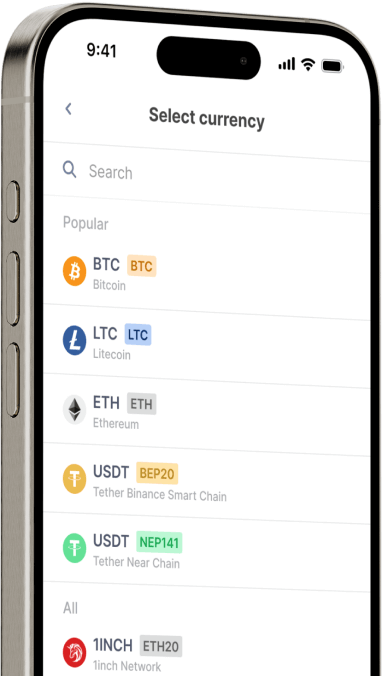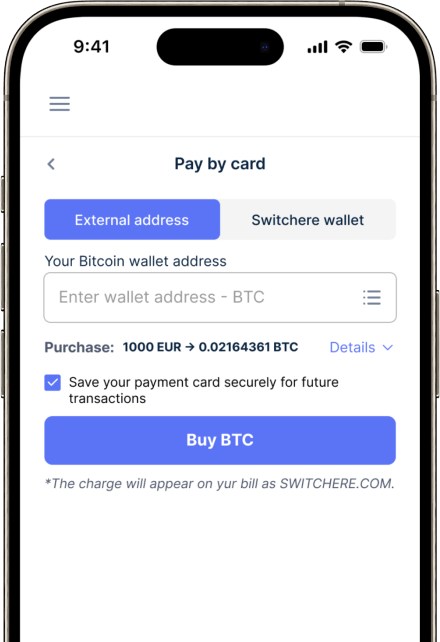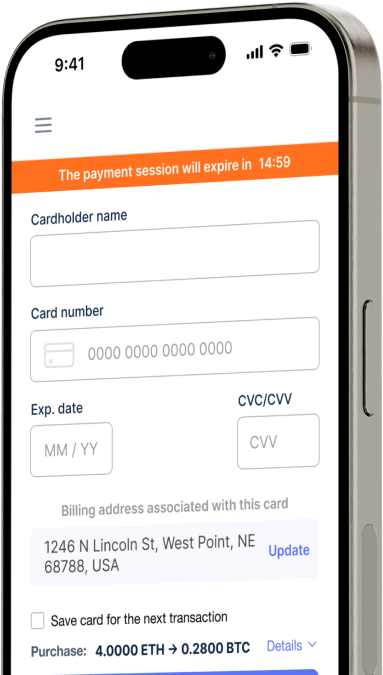Dönüştürmek
Polish Zloty (PLN)'dan Polkadot (DOT)'ye aniden
Switchere'de Polkadot (DOT) ile kolayca Polish Zloty (PLN) satın alın ve hızlı, güvenli işlemlerden yararlanın.
Hakkında
Polkadot (DOT)
Polkadot (DOT), ölçeklenebilir, güvenli, çok zincirli bir mimari içinde benzeri görülmemiş çapraz zincir iletişimi ve birlikte çalışabilirliği kolaylaştırmak için tasarlanmış yeni nesil bir blok zinciri protokolü olarak ortaya çıkmaktadır. Birincil amacı, parachain olarak bilinen farklı blok zincirlerinin bilgi ve işlemleri güvenle değiş tokuş etmesini sağlamaktır. Bu, bireysel ağların izole bir şekilde çalıştığı blok zinciri silolarının önemli zorluklarını ele almaktadır. Polkadot'un temel teknolojisi, bağlı paraşütlere ortak güvenlik ve mutabakat sağlayan merkezi bir Aktarma Zinciri etrafında dönmektedir. Bu paraşütler, esnek Substrate çerçevesi kullanılarak inşa edilen belirli kullanım durumları için özelleştirilebilir ve çeşitli özel zincirler ekosistemini teşvik eder.
Yerel DOT tokenı, bu dijital varlık ekosistemi içinde birkaç önemli rol oynamaktadır. Ağ yönetişimi için kullanılır ve sahiplerinin protokol yükseltmeleri ve hazine tahsisleri ile ilgili karar alma süreçlerine katılmalarına olanak tanır. DOT ayrıca, Polkadot'un Aday Gösterme Kanıtı (NPoS) mutabakat mekanizmasında stake etmek için de gereklidir; burada aday gösterenler, ağı güvence altına almak ve ödüller kazanmak için doğrulayıcıları destekler. Ayrıca, DOT tokenleri, bir açık artırma mekanizması aracılığıyla paraşüt yuvalarını kiralamak için projeler tarafından bağlanır ve Aktarım Zincirine bağlanmalarını ve havuzlanmış güvenlik ve birlikte çalışabilirlik özelliklerinden yararlanmalarını sağlar. Bu tokenomik model, ağın uzun vadeli sağlığına aktif katılım ve uyum sağlayarak Polkadot'u gerçek anlamda birbirine bağlı bir dijital defter sistemi için temel bir Web3 altyapısı olarak konumlandırmaktadır.
Diğer 150+ Kripto Para Birimlerini Polish Zloty (PLN) karşılığında satın alın
Polish Zloty (PLN) için Diğer Madeni Paralar
-
PLN için ZRX
-
PLN için 1INCH
-
PLN için AAVE
-
PLN için ACH
-
PLN için ALGO
-
PLN için TLM
-
PLN için ANKR
-
PLN için APE
-
PLN için NFT
-
PLN için API3
-
PLN için APT
-
PLN için ARPA
-
PLN için AUDIO
-
PLN için AVAX
-
PLN için AVAX
-
PLN için AXS
-
PLN için BADGER
-
PLN için BAL
-
PLN için BNT
-
PLN için BAT
-
PLN için BNB
-
PLN için BSW
-
PLN için BSV
-
PLN için BLUR
-
PLN için BONE
-
PLN için CTSI
-
PLN için CELR
-
PLN için CELO
-
PLN için CEL
-
PLN için LINK
-
PLN için CHZ
-
PLN için CHR
-
PLN için C98
-
PLN için COMP
-
PLN için CFX
-
PLN için PEOPLE
-
PLN için CVX
-
PLN için ATOM
-
PLN için CTC
-
PLN için CRV
-
PLN için DAI
-
PLN için DASH
-
PLN için MANA
-
PLN için DENT
-
PLN için DGB
-
PLN için DYDX
-
PLN için XEC
-
PLN için EOS
-
PLN için ETC
-
PLN için ENS
-
PLN için ETHW
-
PLN için FET
-
PLN için FIL
-
PLN için FLOKI
-
PLN için GALA
-
PLN için GNO
-
PLN için ONE
-
PLN için HBAR
-
PLN için HOT
-
PLN için HOOK
-
PLN için ICX
-
PLN için ILV
-
PLN için IMX
-
PLN için INJ
-
PLN için ICP
-
PLN için IOST
-
PLN için IOTX
-
PLN için JASMY
-
PLN için JST
-
PLN için KAVA
-
PLN için KCS
-
PLN için KSM
-
PLN için KNC
-
PLN için LDO
-
PLN için LQTY
-
PLN için LPT
-
PLN için LOOKS
-
PLN için LRC
-
PLN için LUNA
-
PLN için MKR
-
PLN için MASK
-
PLN için EGLD
-
PLN için ALICE
-
PLN için NEAR
-
PLN için XEM
-
PLN için NEXO
-
PLN için NOT
-
PLN için NMR
-
PLN için OKB
-
PLN için OMG
-
PLN için ONT
-
PLN için EDU
-
PLN için OP
-
PLN için OGN
-
PLN için CAKE
-
PLN için PAXG
-
PLN için PENDLE
-
PLN için DOT
-
PLN için POL
-
PLN için QTUM
-
PLN için QNT
-
PLN için RDNT
-
PLN için XRD
-
PLN için RVN
-
PLN için REN
-
PLN için RSR
-
PLN için RLC
-
PLN için RPL
-
PLN için SFP
-
PLN için SHIB
-
PLN için SKL
-
PLN için SXP
-
PLN için STND
-
PLN için STG
-
PLN için XLM
-
PLN için GMT
-
PLN için STORJ
-
PLN için STMX
-
PLN için SUSHI
-
PLN için SNX
-
PLN için USDT (Polygon)
-
PLN için USDT (AVAC)
-
PLN için USDT (BEP20)
-
PLN için USDT (ERC20)
-
PLN için USDT (SPL)
-
PLN için USDT (NEP141)
-
PLN için USDT (FA2)
-
PLN için USDT (TRC20)
-
PLN için USDT (JETTON)
-
PLN için XTZ
-
PLN için GRT
-
PLN için SAND
-
PLN için TFUEL
-
PLN için THETA
-
PLN için RUNE
-
PLN için TON
-
PLN için TUSD (BEP20)
-
PLN için TUSD (TRC20)
-
PLN için TWT
-
PLN için UOS
-
PLN için UMA
-
PLN için UNI
-
PLN için USDC (Polygon)
-
PLN için USDC (SPL)
-
PLN için USDC (OP)
-
PLN için USDC (BEP20)
-
PLN için USDC (AVAC)
-
PLN için USDC (ARB)
-
PLN için USDC (ERC20)
-
PLN için VET
-
PLN için VRA
-
PLN için WAXP
-
PLN için WOO
-
PLN için WLD
-
PLN için WBTC
-
PLN için WMINIMA
-
PLN için XDC
-
PLN için YFI
-
PLN için YGG
-
PLN için ZIL
Polkadot (DOT) Nasıl Satın Alınır
Sıkça Sorulan Sorular
-
PLN/DOT işlem çifti yatırımcılar için neyi temsil ediyor?
PLN/DOT çifti, kullanıcıların Polonya Zlotisi kullanarak Polkadot'un yerel tokeni olan DOT'u satın almalarını sağlayan doğrudan bir fiat on-ramp'idir. Bu, zincirler arası birlikte çalışabilirlik için tasarlanmış çok zincirli bir ağ olan Polkadot ekosistemine doğrudan erişim sağladığı için önemlidir. PLN ile DOT satın alarak, kullanıcılar ağın Adaylı Hisse Kanıtı (NPoS) konsensüsüne katılabilir, zincir üzeri yönetişimde yer alabilir ve ekosistemin benzersiz Relay Chain ve parachain mimarisini destekleyebilir.
-
Bir PLN işlemi yoluyla edindiğim DOT tokenlerimle ne yapabilirim?
DOT'u edindikten sonra, faydası basit ticaretten çok daha fazlasını kapsar. Polkadot ağında önemli bir dijital varlık olarak, Relay Chain'i güvence altına almak ve ödüller kazanmak için DOT staking'ine katılabilirsiniz. Ayrıca, DOT, token sahiplerinin ağ yükseltmeleri hakkında oy kullanmasına olanak tanıyan zincir üzeri yönetişim için ve Substrate çerçevesi üzerine inşa edilen yeni projeler için bir parachain yuvası güvence altına almak amacıyla bonding için çok önemlidir.
-
Bir PLN alımından sonra Polkadot'umun (DOT) güvenliğini nasıl sağlarım?
Optimal güvenlik için, DOT'unuzu borsadan özel anahtarları kontrol ettiğiniz, gözetimsiz, güvenli bir cüzdana taşımanız şiddetle tavsiye edilir. Seçenekler arasında maksimum güvenlik için donanım cüzdanları veya yerel Polkadot.js cüzdanı gibi Polkadot ekosistemiyle uyumlu yazılım cüzdanları bulunur. Bu, dijital varlığınızı borsa ile ilgili risklerden korur ve DOT staking ve yönetişime katılımınız üzerinde tam kontrol sahibi olmanızı sağlar.
-
Polonya Zlotisi kullanarak DOT tokenleri satın almanın tipik adımları nelerdir?
PLN ile DOT satın almak için genellikle bu özel işlem çiftini sunan düzenlenmiş bir kripto para borsasına kaydolmanız gerekir. Süreç, KYC/AML doğrulamasını tamamlamayı, PLN banka havalesi veya BLIK ödemesi gibi yöntemlerle hesabınıza Polonya Zlotisi yatırmayı ve ardından PLN/DOT piyasasında DOT için bir alım emri gerçekleştirmeyi içerir.
-
PLN'yi DOT'a dönüştürmek için bir fiat ağ geçidi kullanırken dikkate alınması gereken belirli ücretler var mı?
Evet, birkaç ücret yaygındır. Bir fiat ağ geçidi kullanırken, PLN işleminiz için bir para yatırma ücreti bekleyin; bu ücret ödeme yöntemine bağlı olarak değişebilir (örneğin, BLIK standart bir banka havalesinden farklı olabilir). Ayrıca, PLN'den DOT'a dönüşümü gerçekleştirmek için kripto para borsasında bir işlem ücreti olacaktır. Son olarak, DOT'unuzu özel, güvenli bir cüzdana taşırken bir ağ işlem ücreti uygulanacaktır.
-
Polkadot'un parachain'lerine erişim için doğrudan PLN'den DOT'a dönüşüm neden önemlidir?
Doğrudan PLN'den DOT'a bir fiat on-ramp, Polkadot'un benzersiz çok zincirli ortamına girişi basitleştirdiği için çok önemlidir. DOT sahibi olmak, merkezi Relay Chain'e bağlanan özel blok zincirleri olan parachain'lerle etkileşim kurmak için gereklidir. Kullanıcıların parachain kitle kredilerine katılmak, bu zincirler üzerine inşa edilmiş dApp'leri kullanmak ve tüm Substrate tabanlı ekosistemin sağladığı zincirler arası birlikte çalışabilirlikten faydalanmak için DOT'a ihtiyacı vardır.




